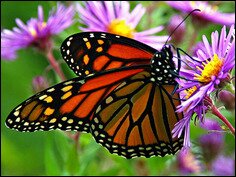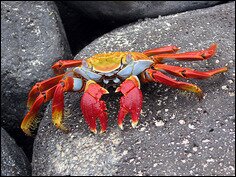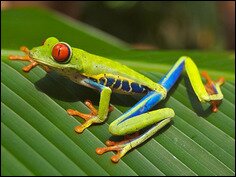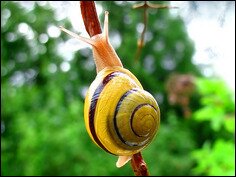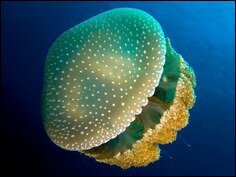What Do Amphibians Eat?
Current Category: Amphibians.
An amphibian is a type of vertebrate animal that spends a part of its life in the water and part on land. Most amphibians have thin, smooth, moist skin that needs regular water, inside and out, in order to stay hydrated and healthy. Some amphibians like toads, for example, are dry-skinned and just need somewhere cool and shady to live. The diet of the animal depends on the size of the prey as most amphibians are toothless and so can’t chew.
 Red-eyed tree frog (A. callidryas). Photo by Carey James Balboa.
Red-eyed tree frog (A. callidryas). Photo by Carey James Balboa.
Common Diet
Most amphibians eat meat, albeit in different preferences among different species. There are three sorts of amphibian; frogs, salamanders (including newts) and caecilians. Young amphibians eat small microorganisms and tiny creatures like water fleas, then as they grow they move onto larger animals like mosquito larvae and shrimp fry. Once they’ve become an adult, amphibians like to hunt small insects and creatures, and the bigger species can hunt small mammals, like mice.
 A bullfrog eating another frog. Photo by Karen Bacon/solent.
A bullfrog eating another frog. Photo by Karen Bacon/solent.
Frogs
Frogs are the most common and the best known type of amphibian, and they are found all over the planet in a wide range of habitats. Young frogs, known as tadpoles, even eat shredded and other vegetables or fruit. As they mature further, and become frogs, their diet changes again. Adult frogs turn into carnivores and will eat any source of meat they can fit into their mouths and swallow. Favorite prey animals include insects, small fish, small animals and worms. The larger types of frog will even manage lizards, rats and small mammals. As frogs can’t bite or chew their food, they need to make sure that their prey animals can be fitted into their mouths and swallowed whole.
 An allegheny mountain dusky salamander eating an earthworm. Photo by .
An allegheny mountain dusky salamander eating an earthworm. Photo by .
Salamanders
Salamanders are often mistaken for lizards, and they do indeed look like lizards, but they are amphibians. They have long slender bodies, four legs and a tail. The size of salamanders varies according to the species, with the smallest types measuring on average 1.2 inches and the largest around a foot in length. As with frogs, young salamanders eat a very different diet than adult salamanders. The young eat cyclopsen, which are tiny animals similar to water fleas, and as they get bigger they will turn to small fish, earthworms and various other small insects. Adult salamanders eat insects, and small animals, including mammals, as long as the prey animal is small enough to swallow whole.
 A caecilian (legless amphibian) tries to eat a giant earthworm. © Luis & Fausto Recalde EcoMingaa.
A caecilian (legless amphibian) tries to eat a giant earthworm. © Luis & Fausto Recalde EcoMingaa.
Caecilians
Caecilians are very hard to find, and most people will never have seen one outside of a book. These animals look like earthworms or snakes and have no legs. They live mainly in South and Central America, South Asia and Africa, and most species live underground in burrows. The smallest species of caecilian is around five inches, and the largest can reach several feet in length. Caecilians aren’t as well studied as salamanders or frogs, but they are thought to be carnivorous as well. These creatures are thought to eat insects, like termites and ants, and they are also believed to feed on earthworms and various other small animals. Analysis of stomach contents has shown significant amounts of plant detritus, but it’s possible that this matter came from the guts of prey earthworms.
Diets for specific species of frogs
- Bullfrog’s diet
- Tree frog’s diet
More on amphibians: Amphibian food chain



